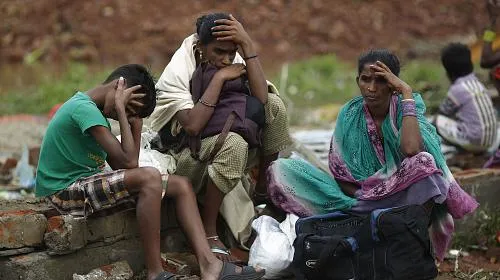ATLANTA – An estimated 1,000 villages, towns and cities in India’s Odisha and Andhra Pradesh states have been left without electricity after Cyclone Phailin destroyed nearly seven-and-a-half million acres of crops and flooded low-lying areas of the coast — home to more than 10 million people.
Many of the more than half a million people who had moved into emergency shelters in anticipation of the storm are now beginning to return to their homes, in many cases to find them destroyed. CARE is working with authorities to ensure people affected are provided with emergency supplies including drinking water, hygiene and survival kits, floor mats and solar lamps.
Yet despite Cyclone Phailin being similar in size, speed and ferocity to 1999’s Cyclone Paradip, which killed nearly 10,000 people throughout Odisha and Andhra Pradesh states, the loss of life from Cyclone Phailin had been low.
“Tragically, state government authorities have so far reported 13 deaths from Cyclone Phailin,” said CARE Australia’s Humanitarian and Emergency Response Manager Adam Poulter. “While this is likely to increase, considering the scale and ferocity was very similar to the 1999 cyclone, the reported death toll from Phailin is extraordinarily low.”
Poulter, who worked in Odisha to assist with recovery from Cyclone Paradip in 1999 and has supported disaster preparedness work in east India for more than a decade, said that the relatively low loss of life was a direct result of the work undertaken over the past 10 years to ensure disaster-prone areas were far better prepared for major disasters. He said improvements in technology, such as the widespread use of mobile phones and early warning weather tracking systems, have been a critical component in the response to Cyclone Phailin.
“Being prepared for disasters saves lives. The simulation, mapping and community preparation work that authorities and aid agencies like CARE did to ensure people in Odisha and Andhra Pradesh were ready and aware of what to do have been the key differences between 1999 and 2013. Communities knew far earlier of the oncoming storm, and the authorities were able to provide clear instructions about what to do and where to go.”
– Adam Poulter, Emergency Response Manager
Poulter said other examples of successful disaster preparedness included the response to Hurricane Tomas in Haiti in 2010, where CARE had trained more than 50 local staff and volunteers in reducing the risk of disease following a disaster. CARE supported government health authorities to prevent any further cholera outbreak.
Media Contacts:
Atlanta: Laura Sheahen, CARE, lsheahen@care.org, +1.404.667.8299, 1.404.979.9228
Atlanta: Brian Feagans, CARE, bfeagans@care.org, +1.404.979.9453

